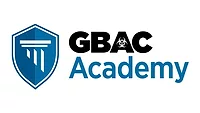Cleaning Infectious Disease
Every infectious disease case is a biohazard situation, and every biohazard situation can include infectious disease
When a call comes in for a restoration or remediation job, the team suits up and prepares the truck. But what happens when the job falls outside of the usual parameters? It’s not uncommon for property managers or homeowners to call restoration or cleanup companies for a wide host of jobs, including water, mold and fire and property damage cases. However, once the details of a case fall into the realm of biohazard and infectious disease cleanup, the requirements of the job change.
A biohazard or infectious disease case requires more than a typical cleaning. If an illness is particularly infectious, a professional biohazard remediation company is trained to protect themselves and others from further exposure. A host of procedures and specially designed cleaning agents must be used to quickly and effectively stop the spread of the pathogen. In the age of “super bugs,” extreme caution is necessary to protect the continued health of a population.
Some studies state that we are exposed to disease-causing viruses and bacteria on a daily basis, including influenza, C. difficile, Hepatitis B and C, AIDS and meningitis. Dangerous bacteria can lurk in cafeteria kitchens, restrooms and cubicles - even in our homes. The lifecycle and virulence of the bacteria itself, the environment where the bacteria is found, and the health of the individual will determine whether an epidemic spreads.
Methicillin-resistant Staphylococcus Aureus (MRSA) is a common form of staph bacteria that often does not pose a threat to healthy people but can compound already existing conditions. However, recent cases in the media describe adults in their prime who contracted dangerous infections following casual exposure in everyday settings, which may indicate that the bacteria is adapting or growing more lethal. MRSA is also resistant to most antibiotics, making it difficult to treat and to clean. As a result, any company called in to clean up any infectious diseases must have the professional training, biohazard processes and protective equipment in place to perform a comprehensive disinfection of potentially affected areas. Aftermath Services offers infectious disease cleaning as a specialty and uses a combination of surface disinfecting tactics and proprietary cleaning agents created especially for biohazard jobs.
These skills were put to task recently when Aftermath Services was called in to treat a Cleveland, Ohio office building after an employee was hospitalized with MRSA and when a Massachusetts school locker room became infected.
Case 1: When Simple Cleaning Won’t Do
Germs are ubiquitous in the environment, which means the remediation team must assume they will be present on almost everything. The effectiveness of a treatment is influenced by type of organism, the complexity and nature of the object being disinfected, environment temperature and concentration. While cleaning eliminates a majority of the risks, disinfection sets a higher standard for clean and requires more time, work and knowledge about how pathogens are spread.
So when an employee of a Cleveland, Ohio, company was sent to the hospital with MRSA, managers were rightfully alarmed and recognized the need for professional biohazard remediation, which Aftermath provided.
After all porous materials were removed (carpet, cloth furniture, cubicle cover and other porous items cannot be disinfected), a three-step biowash process was administered, which would effectively clean and disinfect the office to full safety. To prepare for the process, technicians first removed all dust, dirt and debris from the walls and floor of the office as well as the nearby common spaces.
One of the rather tedious, but effective, parts of the process had to do with the literal wiping method of cleaning: Aftermath technicians wipe a folded cloth in one direction, turn the cloth over and wipe the same section in the same direction, then dispose of the cloth in a biohazard container. Working section by section, all surfaces are cleared. No “back and forth” scrubbing is allowed to prevent redistributing contaminants on the clean surface. This does require more materials usage and time on the job, but the result is considerably more effective when dealing with microbes. This process is standard operating procedure on any full scope job, not just where disease remediation is the focus, since disease can be present in any blood or bio.
Once the surfaces were 100% free of any debris, a specially designed disinfectant was applied until 10 minutes of wet “dwell time” was achieved. Some viruses, such as the norovirus (which recently made the nightly news as hundreds of cruise ship passengers were affected on two different ships), require a specific chemical, but in this case standard proprietary agents were used. It’s vital to allow the full 10 minutes for disinfection to occur. There’s no room for error, as this might allow regrowth of the pathogen.
After all three stages were complete, the surfaces were tested with an ATP (adenosine triphosphate) test to identify levels of microorganism activity – tolerance levels for Aftermath biohazard jobs are 0 RLU (Relative Light Units), which is the same as food manufacturing.
Case 2: School Locker Room Outbreak
Not every case is contained to one person. In January 2014, Aftermath was called in by a high school in Massachusetts to stop the spread of Eczema herpeticum. The viral infection is characterized by fever and clusters of itchy and painful blisters, which may spread across the body within seven to 10 days. Eczema herpeticum is considered one of the few dermatological emergencies because the disease may affect multiple organs, including the eyes, lung and liver and can be potentially fatal.
The school localized the point of infection to the boys locker room, wrestling team room and weight room after students and other area teens who had participated in sporting activities were diagnosed with the condition.
After getting the call, the Aftermath team first dissected the needs of the client to best ensure the safety of the students and staff. Due to the dangers associated with the bacteria spreading in a school, the administration required team members to disinfect the impacted rooms overnight while the school was closed.
Bill Ciaccio, the Regional Supervisor for Massachusetts, knew that the large 10,000-to 15,000-square foot space required additional manpower to effectively disinfect the rooms in just one evening. Five team members took on the time constraints of the job and quarantined, sanitized and de-odorized the affected areas between 8 p.m. and 5 a.m.
“In any infectious disease case, it’s vitally important to effectively quarantine an area and create a buffer zone so that the bacteria can be contained and eradicated,” said Ciaccio.
Every infectious disease case is a biohazard situation, and every biohazard situation can include infectious disease. Utmost care needs to be taken to properly train and equip any employee dealing with the cleanup process – for their own safety and for the safety of those who come in contact with the infected area.
Looking for a reprint of this article?
From high-res PDFs to custom plaques, order your copy today!







